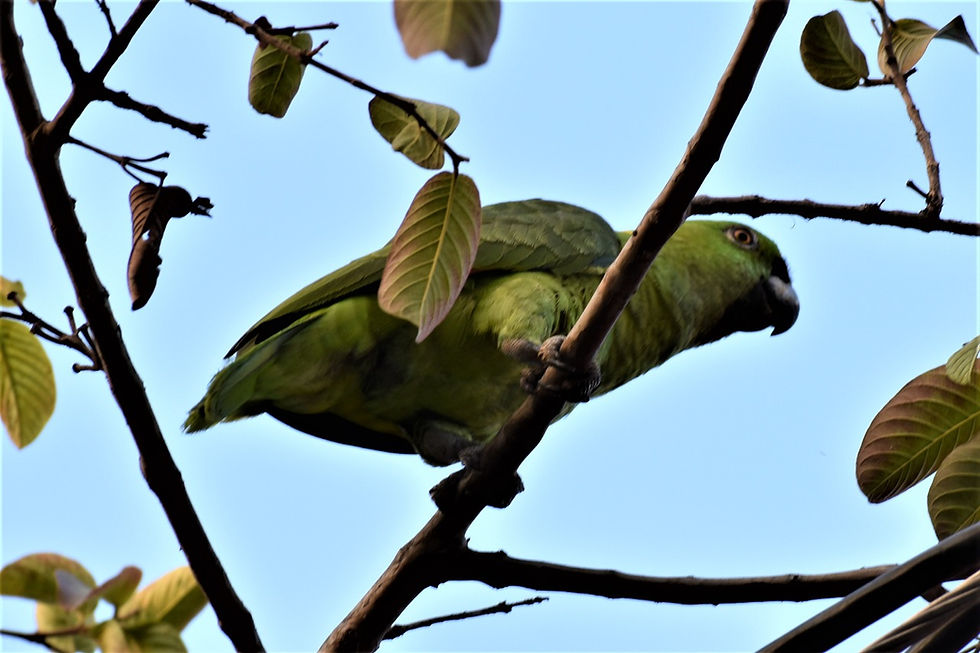Let’s Talk About Geckos!
- HonNeo

- Aug 6
- 4 min read
Today we’ll talk about the friendly little lizards commonly known as geckos, or by other names like “cuijas” or “salamanquesas.” There are around 1,500 species worldwide—possibly one of the most diverse groups of lizards (“Saurians”) on the planet. They are well adapted to tropical and subtropical ecosystems, and even to some temperate zones (Vidal & Hedges, 2009). Certain traits they’ve developed have allowed them to thrive in urban environments, making some species like Hemidactylus frenatus cosmopolitan—so much so that you probably have a few living in your house!
In general, they are small lizards and, unlike other reptiles, they have more elastic skin with granular scales. This makes them vulnerable to epidermal (skin) damage when attacked by predators. Most don’t have movable eyelids (with the exception of the family Eublepharidae); instead, these have fused into a transparent cover that protects the eyes. That’s why they use their tongues to clean their eyes regularly. Most species have cryptic coloring and skin patterns that help them camouflage with their surroundings. However, there are exceptions, like the colorful diurnal geckos of the genera Phelsuma, Lygodactylus, Gonatodes, and Sphaerodactylus.
One major adaptation of this group is their digital pads (Figures 1 and 2), also called “lamellae,” which are highly developed and come in different shapes. These allow them to grip a variety of surfaces, even smooth ones—whether vertical or upside down. This feature helps determine the family they belong to (Russell & Gamble, 2019). In fact, the word “dactylus” means “finger” and is often used in the scientific names of these species. So next time you see a gecko defying gravity, you’ll know why!

Figure 1. Underside view of the toes of some geckos showing different types of “lamellae” pads: A. Green-eyed gecko (Gekko smithii) B. Clawless gecko (Ebenavia inunguis) C. Leaf-tailed gecko (Uroplatus ebenaui) D. Croaking geckos (Aristelliger sp.) Credits: Russell & Gamble (2019)
Geckos feed on a wide variety of arthropods like insects and spiders, though some species can be cannibalistic. You probably know they reproduce by laying eggs in crevices, although some species can also reproduce via parthenogenesis—i.e., without the need for a male.

Figure 2. Underside view of a common house gecko (Hemidactylus frenatus).
Geckos are known for shedding their tails when in danger—a distraction strategy called “autotomy,” used as a last-ditch escape tactic (Jagnandan et al., 2014). Another standout behavior of these friendly neighbors is their vocalizations. They are the noisiest members of the order Squamata and can emit a range of sounds—for warning, mating, escaping, fighting, and other still-studied purposes. These calls can vary in pitch and tone and are unique to each species and individual (like your singing voice), communicating the identity and condition of the gecko making the noise (Rohtla et al., 2019).
You can hear the vocalization of Hemidactylus frenatus at the following link:
© Fonozoo (2020) - Fonoteca Zoológica - Museo Nacional de Ciencias Naturales.Hemidactylus frenatus call, recuperado de http://www.fonozoo.com/eng/Hemidactylus.htmel 08 de mayo de 2020.
Now that you know a bit more about geckos, let’s look at the species found in Honduras. Currently, there are 21 species across 7 genera and 4 families:
Family Eublepharidae has one species: Coleonyx mitratus, commonly known as the banded gecko (Figure 3).

Figure 3. Coleonyx mitratus, family EUBLEPHARIDAE (The Reptile Database)
Family Gekkonidae includes 3 invasive species: Hemidactylus frenatus (Figure 2), Hemidactylus haitianus, and Hemidactylus mabouia.
Family Phyllodactylidae has 4 species, known as leaf-toed geckos: Phyllodactylus palmeus, P. paralepis, P. tuberculosus (Figure 4), and Thecadactylus rapicauda.

Figure 4. Exact moment a Leptophis diplotropis snake devours a Phyllodactylus tuberculosus (Hernández & Cortés, 2011).
Family Sphaerodactylidae has 13 species:
Aristelliger sp., Aristelliger nelsoni (croaking geckos, currently endangered—see Figure 5), Gonatodes albogularis (Figure 6), Sphaerodactylus alphus, S. continentalis, S. dunni, S. exsul, S. glaucus, S. guanaje, S. leonardovaldesi, S. millepunctatus, S. poindexteri, and S. rosaurae (McCranie, 2018).
In August 2019, Tom Brown and Flavia Diotallevi confirmed the presence of Lepidodactylus lugubris on Utila Island—so if a stable population is established, Honduras would have 4 invasive gecko species.

Figure 5. Adult female Aristelliger nelsoni, endangered according to IUCN Red List assessment.

Figure 6. Adult male Gonatodes albogularis, one of the most colorful geckos in Honduras.
In future posts, we’ll show you more about these wonderful species.
Follow us on social media:
Instagram: @honduras_neotropical Facebook: @HondurasNeotropical
By: Denis Padilla, Biologist
References
Brown, T., & Diotallevi, F. (2019). Confirmation of the Mourning Gecko, Lepidodactylus lugubris (Duméril and Bibron 1836), on Isla de Utila, with Remarks on the Island’s Invasive Reptiles. IRCF Reptiles & Amphibians, 2(26), 151-154.
Jagnandan, K., Russell, A. P., & Higham, T. E. (2014). Tail autotomy and subsequent regeneration alter the mechanics of locomotion in lizards. Journal of Experimental Biology, 217(21), 3891-3897. https://doi.org/10.1242/jeb.110916
McCranie, J. (2018). The lizards, Crocodiles and Turtles of Honduras. Systematics, Distribution, and Conservation. Bulletin of the Museum of Comparative Zoology 15: 1–667.
Rohtla, E. A., Russell, A. P., & Bauer, A. M. (2019). Sounding Off: Relationships between Call Properties, Body Size, Phylogeny, and Laryngotracheal Form of Geckos. Herpetologica, 75(3), 175-197. https://doi.org/10.1655/D-19-00021
Russell, A. P., & Gamble, T. (2019). Evolution of the Gekkotan Adhesive System: Does Digit Anatomy Point to One or More Origins? Integrative and Comparative Biology, 59(1), 131-147. https://doi.org/10.1093/icb/icz006
Vidal, N., & Hedges, S. B. (2009). The molecular evolutionary tree of lizards, snakes, and amphisbaenians. Comptes Rendus Biologies, 332(2-3), 129-139. https://doi.org/10.1016/j.crvi.2008.07.010
Figure credits
Hernández, R. A., & Cruzado, C. (2011). Leptophis diplotropis. Diet. Herpetological Review 42(2):292-293.
Shawn, M. (2011). Coleonyx mitratus | The Reptile Database. Recuperado el 6 de mayo de 2020, de http://reptile-database.reptarium.cz/species?genus=Coleonyx&species=mitratus
Toro, F. (2017). Gonatodes albogularis [Photo]. https://www.flickr.com/photos/pipefalco/33902387265/





Comments